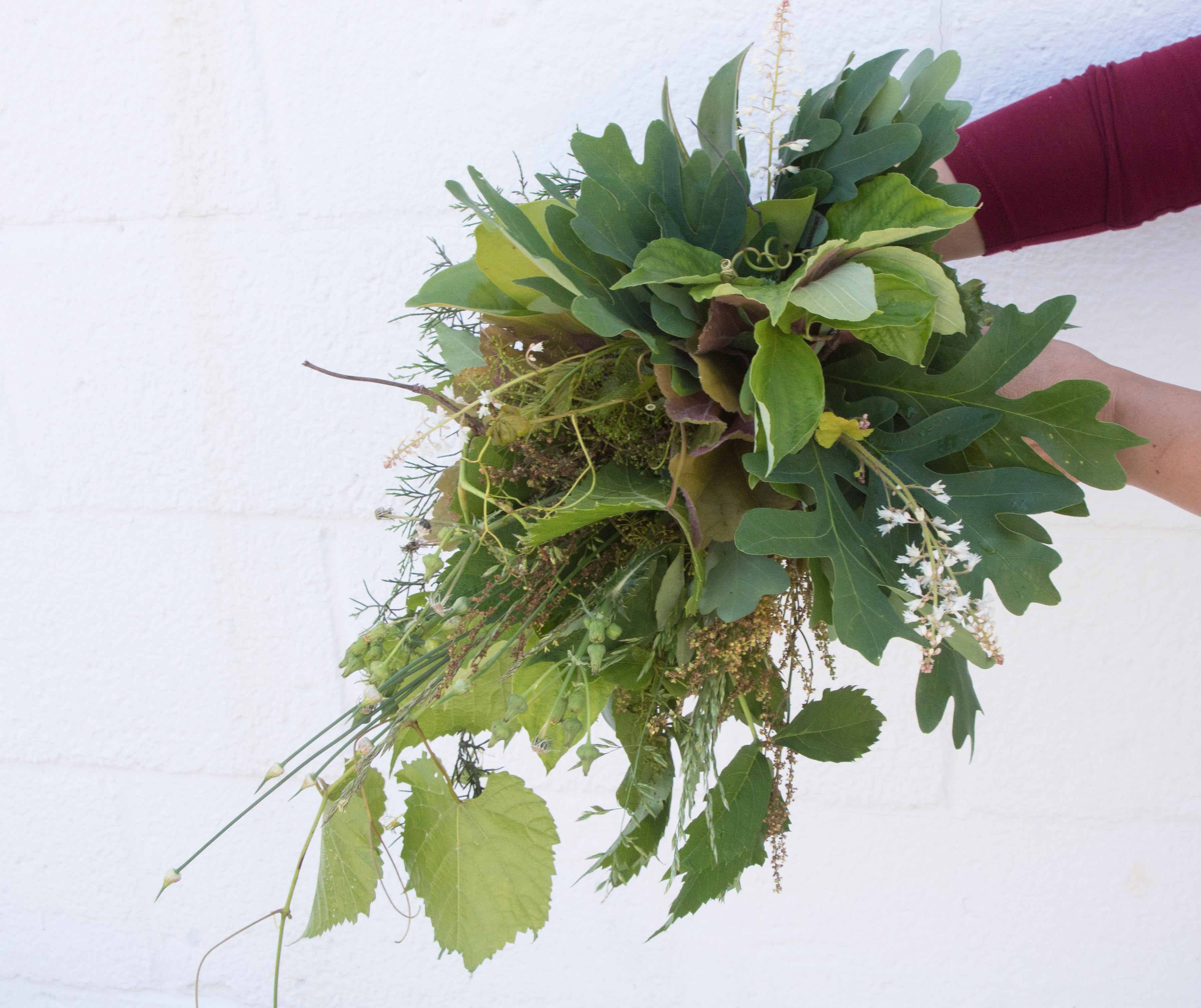Embracing creativity and diversity
Published 8:44 am Thursday, July 6, 2017

- This mostly green bouquet includes fox grape leaves and tiny fruit, Virginia creeper, oak and dogwood leaves, wild onions, sour grass and tiarella blooms.
Once upon a time, there was a beautiful and very thoughtful young woman who wanted to have the perfect early summer wedding. You know the scenario: cakes and decorations made by family members and friends, a meaningful location celebrating nature’s beauty without screaming conspicuous consumption and native flowers rather than the typical florist’s blossoms that are so often imported from South America.
These plans all sound lovely and like good fun. The only problem with using native flowers is that the season this year is a bit odd. Many plants bloomed several weeks ahead of schedule, while others were pokey. For a June/July wedding this year, the columbines and blue false indigo will be long gone, so will all the early spring ephemerals. The late summer bloomers, however, haven’t opened yet. This wedding is hitting right at the beginning of the Great Annual Summer Green Out.
What to do? Broaden the concept of native flowers to include foliage. Think green, lots of interesting native leaves with different shapes and varying shades of green for both bouquets and table top arrangements. Although the very southern Magnolia grandiflora isn’t native to Virginia, several other magnolias, including the sweet bay magnolia, Magnolia virginiana, and the umbrella magnolia, Magnolia ternata, are. They would provide large, lush leaves as well as light shades of green. Sassafras and Sassafras albidum, would offer interesting shaped leaves with a bit of texture. Purple passionflower vines could be used to add gracefully drooping stems, tendrils and just maybe a flower or two. Our native stonecrop, Sedum ternatum, would make a fleshy but dainty boutonniere or tiny table top arrangement especially when used with foamflower, Tiarella cordifolia, which has semi glossy, roughly-heart shaped leaves that would contrast nicely with the sedum.
What about flowers? With so many different types of foliage to choose from, flowers might not be necessary, but why not sneak in a non-native flower or two, such as queen Anne’s lace, daucus carota, or bull thistle, cirsium vulgare? Native pasture thistles, cirsium pumilum, would add color, texture and an element of surprise too. The smoky mauve of milkweed blooms would be nice too. And if the Black-Eyed Susans are blooming, they would add a cheery note. Maybe even some grasses too.
Why not walk down the back alley on the morning of the wedding and pick random “weeds?” I bet weeds would look quite elegant mixed with native foliage and very few guests would have any idea what those exotic looking plants really were.
So smile, relax, enjoy the day and know that you’ve put together something quite different that honors nature’s diversity and the beautiful young bride’s creativity.
Cynthia Wood is a master gardener who writes two columns for The Herald. Her email address is cynthia.crewe23930@gmail.com.


